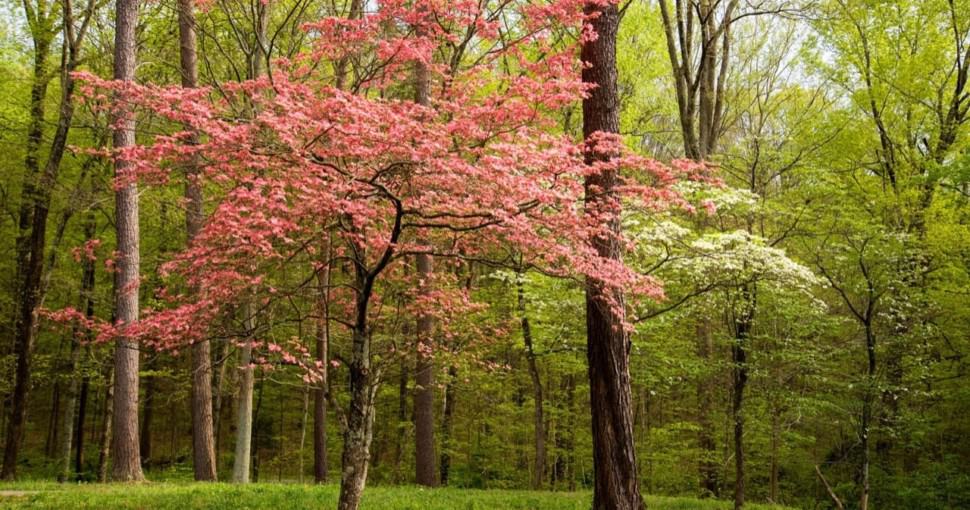The dogwood is as North American as tacos, apple pie, and poutine. Alas, dogwood blight is rapidly reducing their numbers. While people are still encouraged to plant the tree to quell the dropping numbers, it can bring gardening heartache. There are other trees that look similar to dogwood, but some may be a better fit than others.
Contents
- 1. Bradford Pear: The White Dogwood Doppelgänger
- 2. Redbud: The Pink Dogwood Doppelgänger
- 3. Princess Kay Plum: The Double-Flowered Dogwood Twin
- 4. Silverbell Tree: The Older Dogwood Lookalike
- 5. Japanese Flowering Cherry: The Prom Queen Faux-Dogwood
- 6. Kentucky Yellowwood: The Lovechild of Dogwood & Wisteria
The most similar-looking trees to dogwood are the Bradford pear with white flowers and the redbud with pink to lavender flowers. Other eye-catching alternatives include:
- Princess Kay Plum
- Silverbell Tree
- Japanese Flowering Cherry
- Kentucky Yellowwood
- Fringetree
Dogwoods have many varieties, including the fire-resistant Pacific dogwood. But the best chance of avoiding blight is the Kousa dogwood, also known as Chinese dogwood. However, unlike some of our six Dogwood alternatives, the Kousa dogwood is not native to North America. Even so, the Kousa is worth considering.
1. Bradford Pear: The White Dogwood Doppelgänger
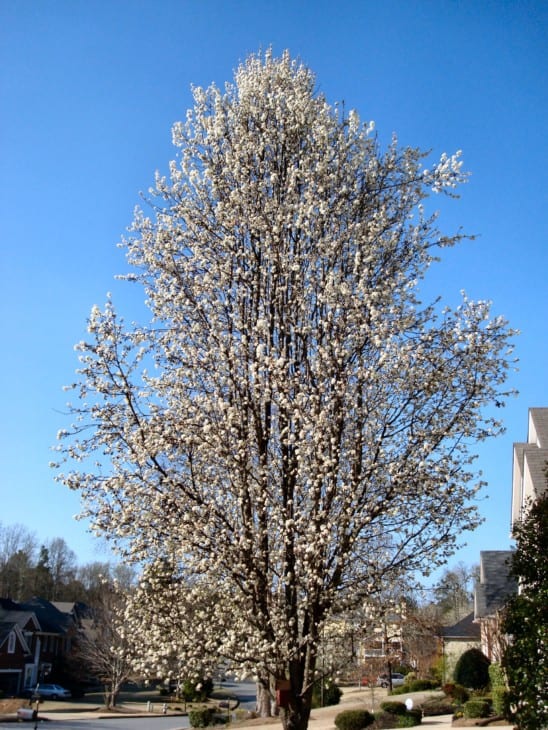
The Bradford Pear is often mistaken for dogwood when it bursts into bloom. The flowers are usually white with pink edges and a touch of pink in the “crown” of the center. The tree is a hybrid that is known for its spectacular fall colors. It reaches a similar size as a typical dogwood, with heights up to 30 – 50 feet (9 – 15m) and spreading out 20 – 30 feet (6 – 9m).
The Bradford is not as robust as dogwood, so the branches are more prone to breakage. Like the dogwood, its fruit isn’t edible. It’s not classified as toxic to humans or dogs, but the animals may have an upset tummy and even vomit after eating them. The Bradford can also be invasive in some areas, such as South Carolina, so check before planting.
The Bradford enjoys well-drain soil and needs to be at least 10 feet (3 m) from another tree. They require full sun and do not do well in strong winds. While they are fast-growing and beautiful trees, they only live 15-25 years. They can also spread fire blight.
2. Redbud: The Pink Dogwood Doppelgänger
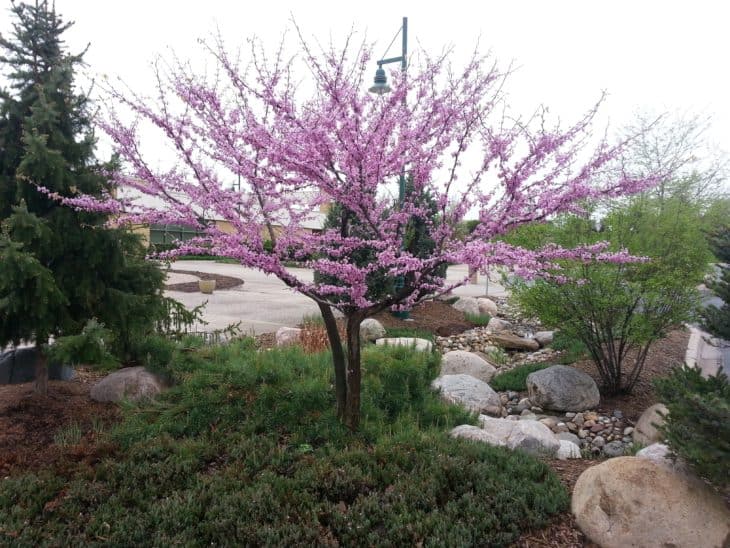
The redbud tree is native to Eastern parts of North America. It is sometimes mistaken for a slender dogwood, with its flowers typically pink to red, with two white. Like the dogwood, the redbud has many varieties, suiting slightly different climate conditions. They flower before their leaves come in, which are also of various colors.)
Popular redbuds include:
- Alba (white flowers, light green leaves)
- Appalachian Red Redbud (rosy-red flowers, dark-green leaves)
- Flame Thrower Redbud (pink flowers, red leaves that fade to green)
- Forest Pansy (rosy-pink flowers, burgundy leaves in cooler climates, green in hot)
- Merlot Redbud (pink flowers, merlot leaves)
- Oklahoma Redbud (pink flowers, shiny green leaves)
- Ruby Falls (red-purple flowers, dark green leaves)
- Texas White (white flowers, bright green leaves)
Redbuds like regular water but will tolerate short dry spells. They can be in full sun and some light shade. They reach heights of 20 – 30 feet (6 – 9 m), reach breadths of 25-35 feet (7.5 – 10.5 m), and live for around 20 years. Redbuds only require occasional pruning to rid dead branches and weak forks.
3. Princess Kay Plum: The Double-Flowered Dogwood Twin
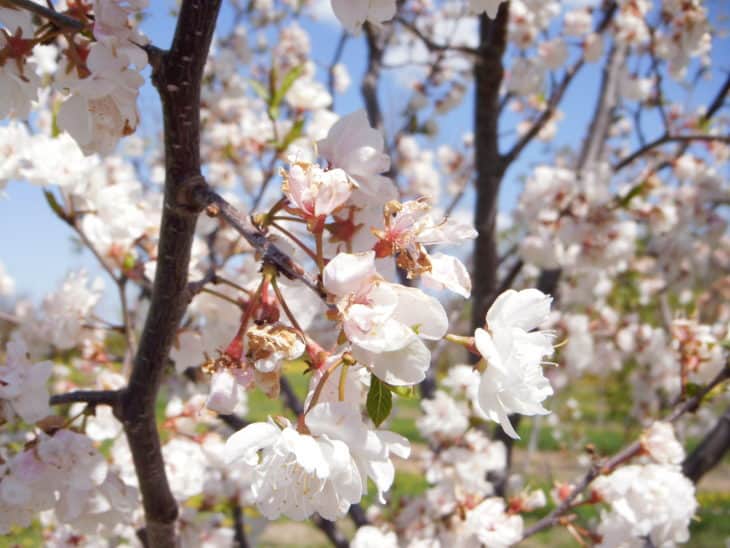
The princess kay plum is a small tree of 10 – 15 feet (3 – 4.5 m). that bears a striking resemblance to a dogwood. But it has white doubled-flowers that gradually shift to pink and a wonderful fragrance. Sadly, the blooms only last for around 10 days. It was discovered by Catherine Kay and Robert Nyland, released in 1986 by the University of Minnesota.
The princess kay plum puts on a dramatic show each fall and is pretty hardy, tolerating -50 F (-45 C) and do well in elevations up to 7,500 feet (2,286 m). They are also deer resistant. While its fruit is edible, they are not designed to be major fruit producers, with only 20% of what a proper plum tree puts out.
4. Silverbell Tree: The Older Dogwood Lookalike
The silverbell tree is native to North Carolina and a Great Smokey Mountain treasure. The silverbell is a long-lasting tree, living around 100 years. It ranges from being a shrub to a trained tree of up to 40 feet (12 m). As the name suggests, the tree’s flowers are bell-shaped, so up-close do not have the open look of a dogwood’s.
The silverbell can grow in full sun or partial shade. While it prefers moist soil, it must be well-drained. It isn’t plagued by any serious pests, making it easier to care for and partly explains its generous lifespan.
While the silverbell is known for its white flowers, there are varieties with other colors or variegated leaves. These include:
- Arnold Pink (pink flowers)
- Rosy Ridge (pink flowers)
- Rosa (pink flowers)
- Silver Splash (variegated leaves)
- Variegata (variegated leaves)
5. Japanese Flowering Cherry: The Prom Queen Faux-Dogwood
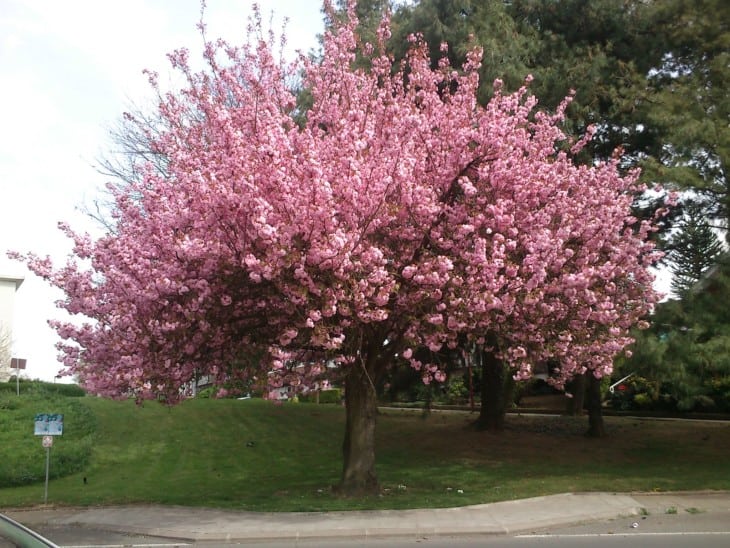
The Japanese flowering cherry is made for show, looking like a dogwood dressed up for prom, pretty in pink. Most cultivars of this tree don’t bear fruit, although a few will put out a modest number of inedible cherries. This tree’s job is to look gorgeous, and that it does, including with a striking reddish-bronze bark.
The Japanese flowering cherry is on the smaller side, reaching heights around 15-25 ft (4.5 – 7.5 m) and a spread of 13 – 26 feet (4 – 8m). Unfortunately, despite its undeniable gorgeousness, it is considered invasive in some areas. Nor is it long-lived, averaging 15 – 20 years.
They don’t require much pruning. In fact, it should only be done, when necessary, with sterilized tools, as the cut makes them vulnerable to fungal diseases. They can also attract leaf-mining moths, bacterial canker, and are prone to trunk splitting. They are, however, deer resistant.
6. Kentucky Yellowwood: The Lovechild of Dogwood & Wisteria
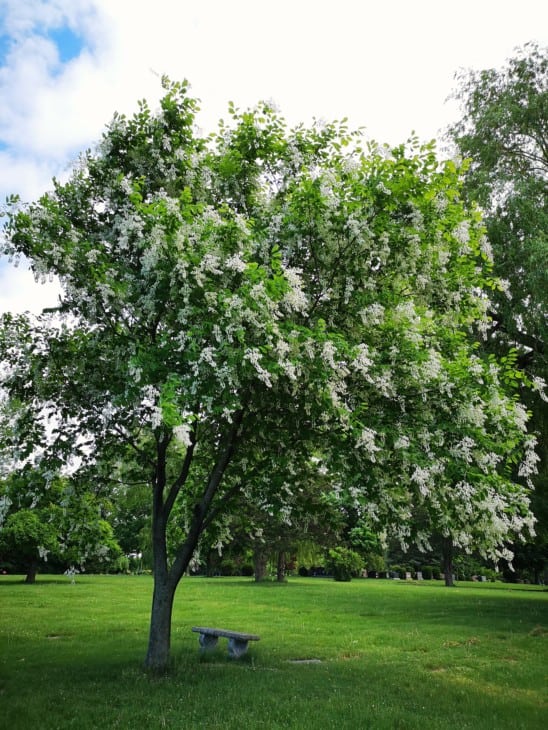
When the Kentucky yellowwood flowers, it’s as if a dogwood and a wisteria had a love child. The deciduous tree is native to the Southeastern United States. It’s a hardwood embedded with a natural yellow dye that gives its timber such a distinctive color. When it blooms, the white flowers cascade 15 inches (38 cm) in bunches.
The Kentucky yellowwood reaches up to 50 feet (15 m) and is as wide. It requires pruning in summer to keep the branches well-spaced. Lack of pruning leads to these trees to falling apart, sometimes as early as 30 years old. But with care, they can live to 100. The Kentucky yellowwood favors partial shade and fertile soil that is well-draining.

